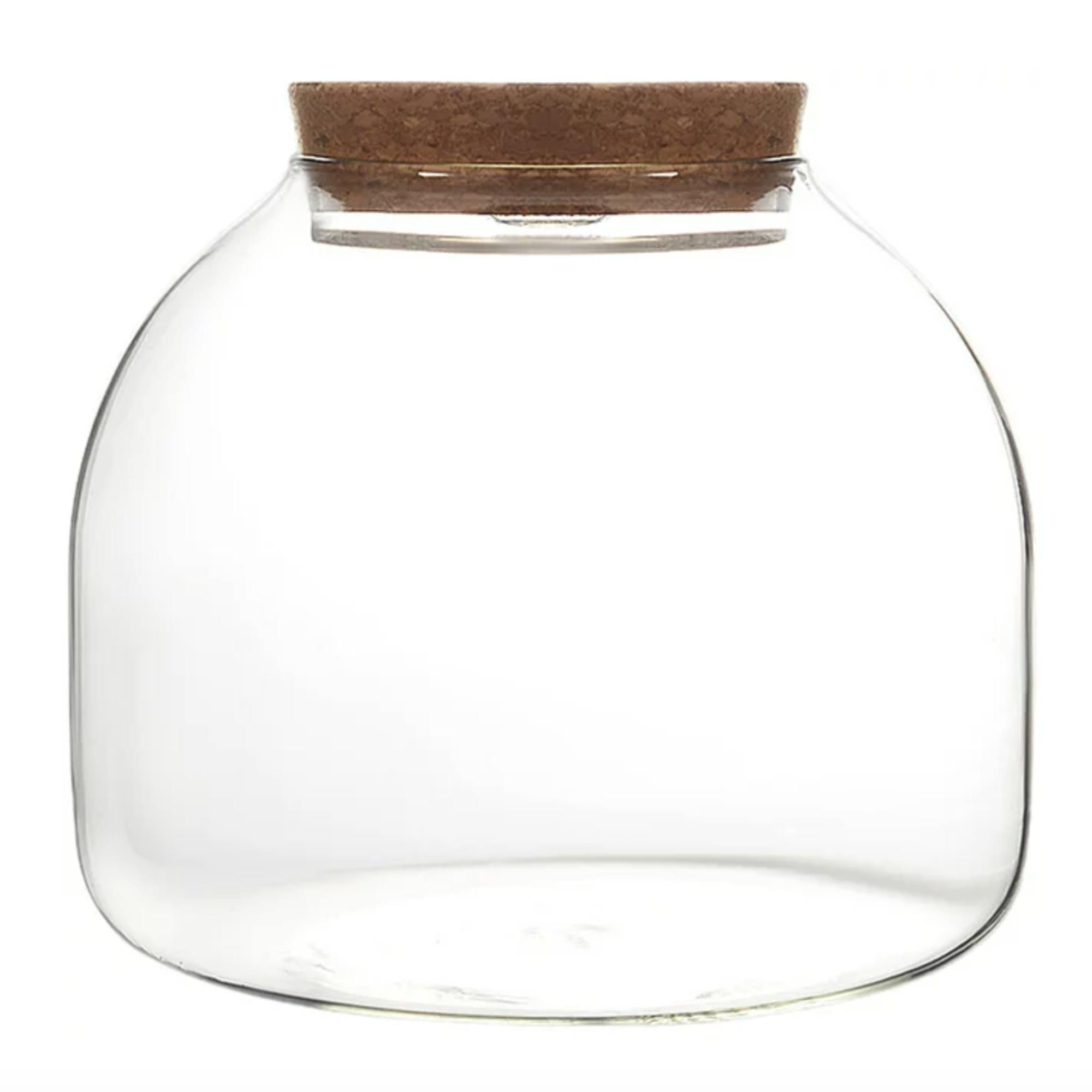How to make a terrarium – and have a living ornament in less than an hour
Follow our step-by-step guide to terrarium success
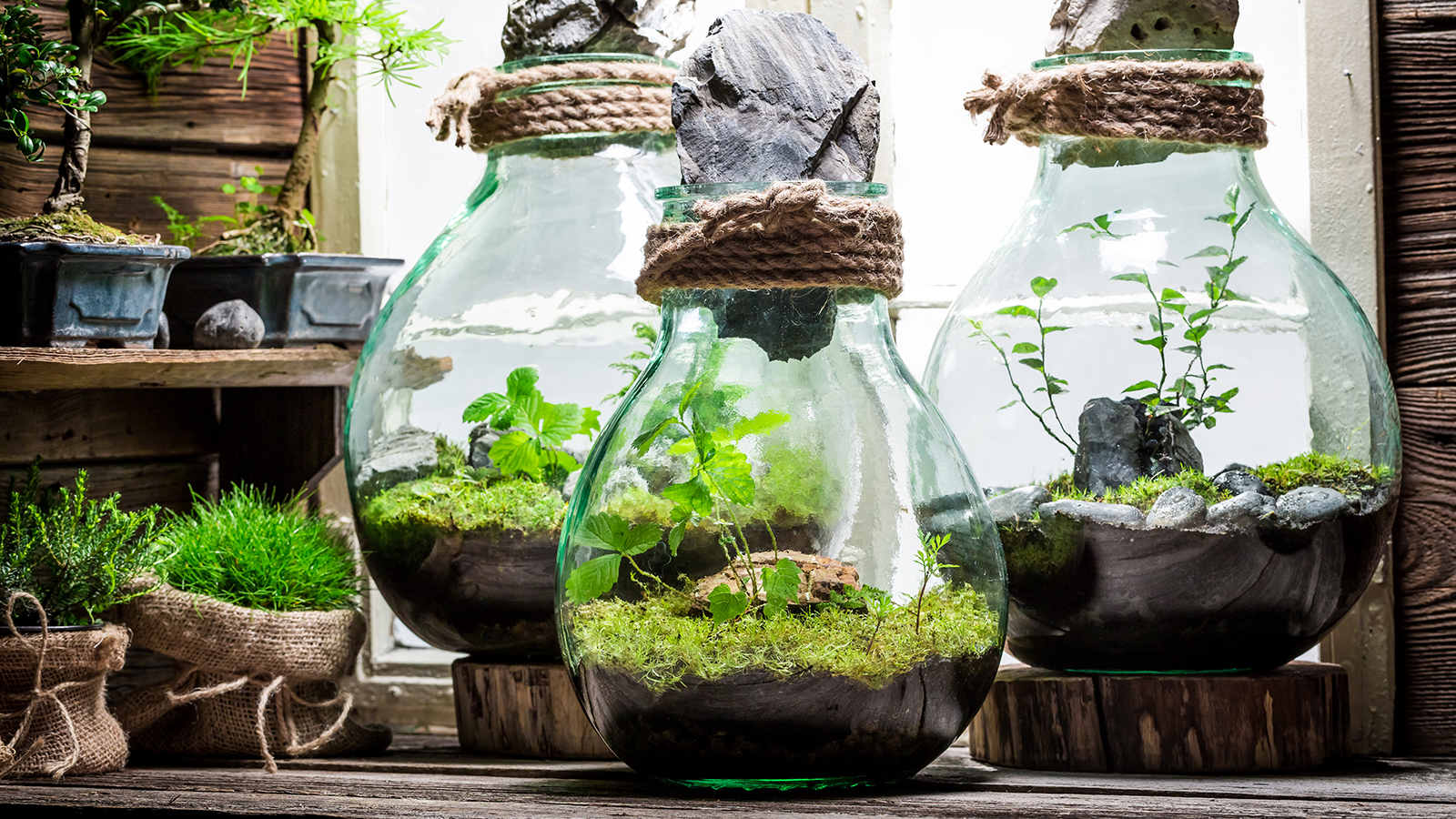

Once you find out how to make a terrarium you won't believe it's taken you this long to try it out.
I have a few terrariums in my own home, and from experience it only takes an hour or so to create your first one. What's more, you don't need many materials either. Mason jars, goldfish bowls, candy jars and even French presses can all be used to make beautiful containers for DIY terrariums. You can also pick up mini plants cheaply, so it's an inexpensive gardening habit to acquire.
I've found that creating a terrarium is one of the most rewarding and easy-to-maintain indoor garden projects you can try and one of the most long-lasting houseplant trends. These small, self-contained displays are perfect for adding a natural element to your interiors.

How to make a terrarium in 5 easy steps
Terrarium plants will grow well in most containers as long as it is properly set up and your terrarium care is correct. You also need to take into account which types of terrarium plants you're growing - succulent styling requires a different type of vessel to moisture-loving plants, for example.
'A terrarium provides a controlled environment for plants, with adequate moisture, light, and air circulation,' explains houseplant expert James Kinsella from outplanted.com.
Follow these simple steps for making a terrarium and show off some of your favorite mini indoor plants.

James specializes in horticulture and botanical research, and has been growing and rewilding forests with trees, including endangered species, for over 15 years.

Succulents thrive in an open terrarium, which are less likely to have problems with condensation and fungal plant diseases than closed terrariums
You will need:
Design expertise in your inbox – from inspiring decorating ideas and beautiful celebrity homes to practical gardening advice and shopping round-ups.
- A glass or plastic container
- A layer of gravel or pebbles
- Terrarium soil potting mix at Amazon
- Activated charcoal
- A selection of mini plants suitable for a terrarium
- Spoon for placing soil
- Long tweezers for adding materials to the container
- Moss and other decorations
1. Choose the right container

You can't go wrong with a spacious glass design like this one. It makes watering easier too
This is one of the most important things to get right when learning how to make a terrarium for the first time. The good news is there's lots of flexibility when choosing a container for your self-contained indoor garden.
You could opt for a large glass jar, fish bowl, or other clear container with a lid or opening. Some plants thrive in a closed terrarium while others prefer an open one. We like mini indoor ferns and the visually striking polka dot plant.
If you're planting succulents choose a glass bowl with a slanted open design like this WGV Slant Cut Bowl Glass Vase at Amazon to create the right environment for them to thrive as they don't like being enclosed.
A common terrarium care mistake is failing to make sure the container is large enough to accommodate the plants you have in mind. It should also be thoroughly clean and dry before you start, and there should be plenty of room for your plants to grow.
Plastic containers work just fine too. They are lighter and have a good transparency rating, and some even have an automatic misting function for those all-important humidity levels.
Shop terrarium containers
2. Add a layer of gravel or pebbles to the base
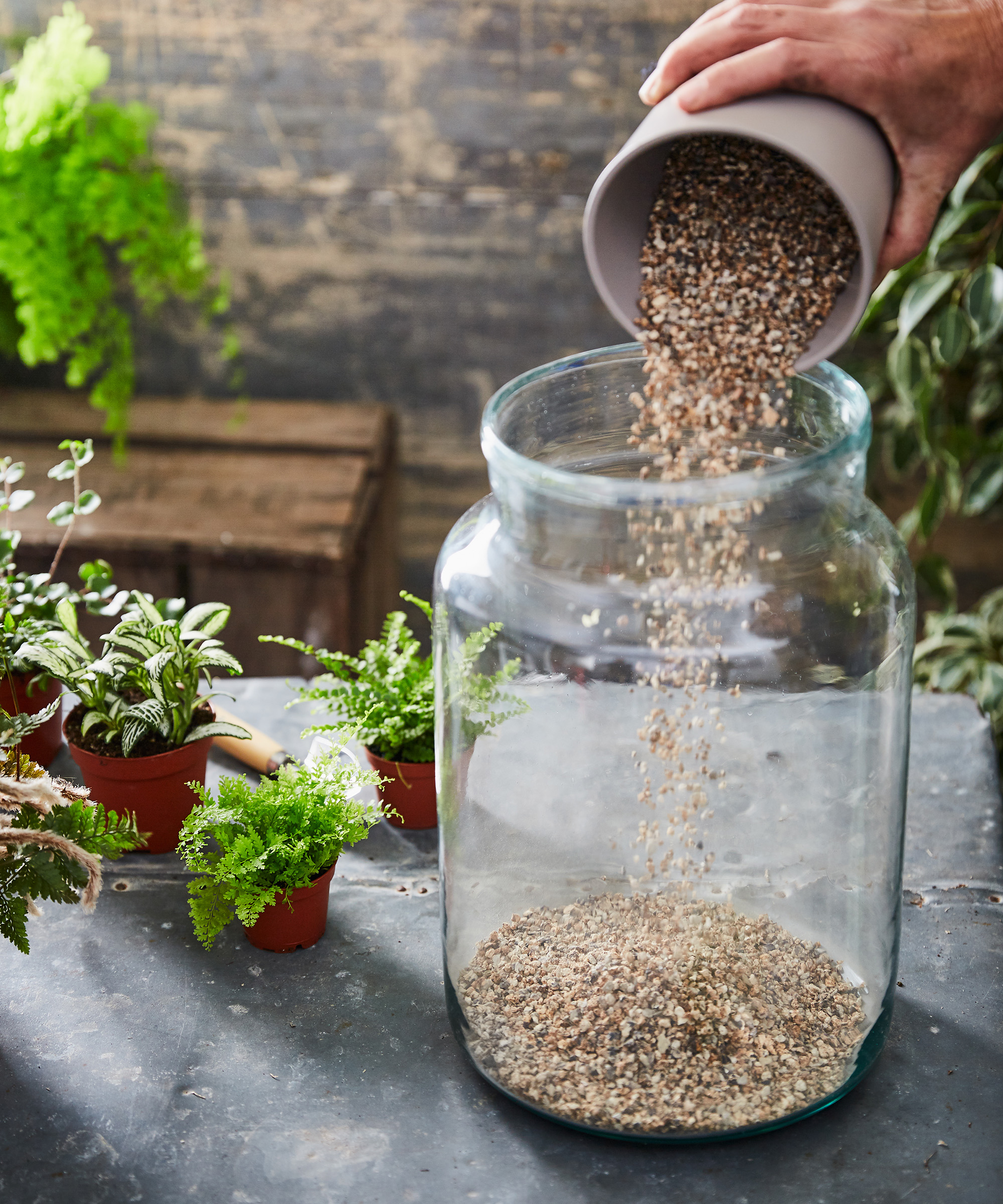
Decant gravel into a small container to make filling the terrarium easier. Using a funnel also helps avoid the gravel sprinkling everywhere
Add a layer of gravel or pebbles, such as these polished river rocks at Amazon, to the bottom of the container. This will help with drainage and prevent the roots of the plants from sitting in water, which will be detrimental to their health.
'Your terrarium's base layer of tiny rocks will serve as the drainage system,' explains Aaditya Bhatta, founder of Plantscraze. 'Add a layer of pebbles or small stones 1-2 inches deep to the bottom of your terrarium.'
On top of the gravel or pebbles, it's a good idea to add a fine layer of activated charcoal at Amazon. This will help to filter the air and prevent mold and bacteria from growing in the terrarium.

Aaditya worked as a horticulturist for over a decade. He's covered everything from seeding, growing, repotting, pruning, and other caring methods.
3. Layer up the right potting soil
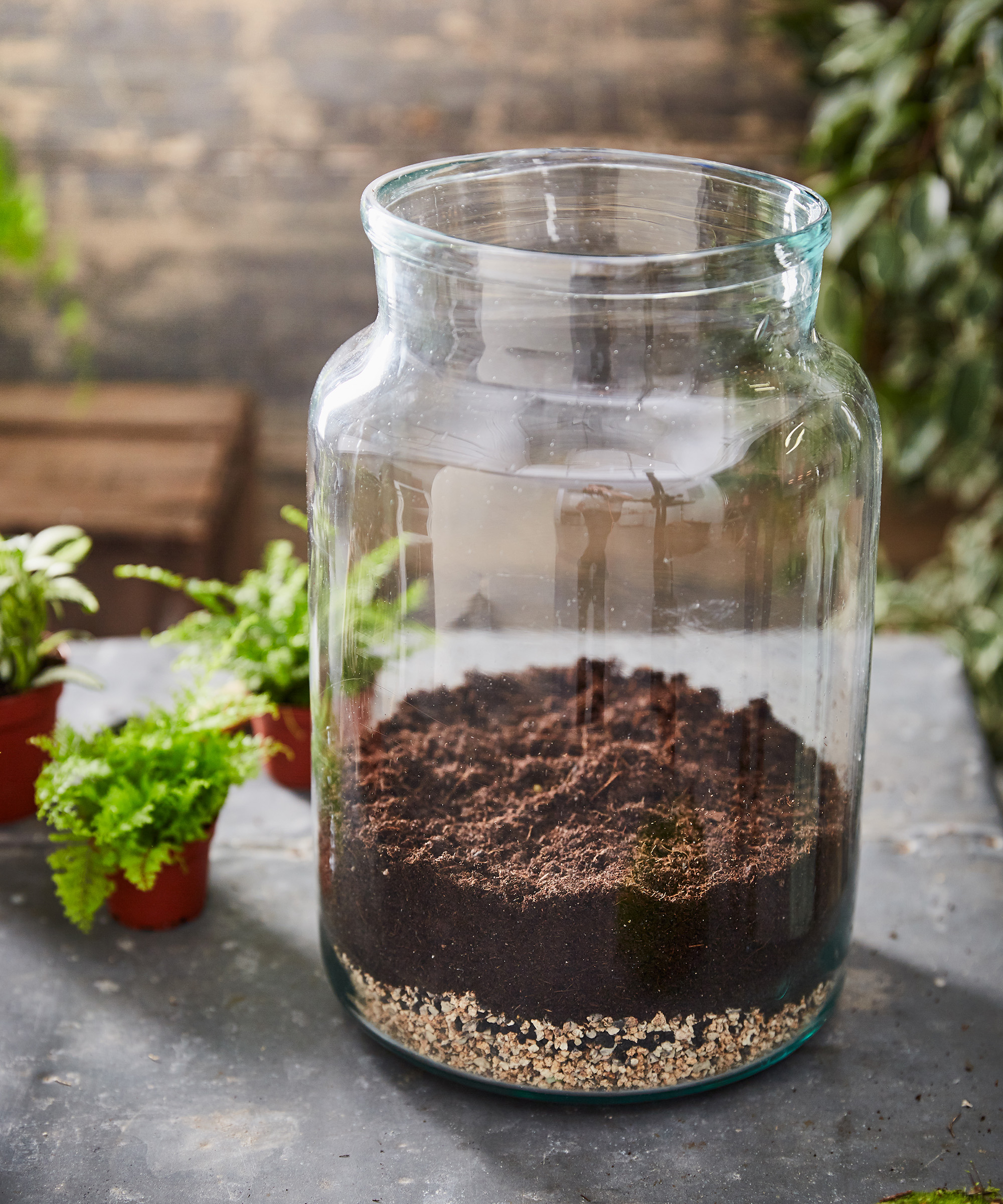
Be careful what type of soil you choose for your terrarium
Make sure you use a soil that is right for terrariums, as regular garden potting soil can contain fertilizers that your mini plants don't need.
'Cococoir, peat moss or houseplant soil works with most terrarium plants, aside from succulents which prefer a well-drained inorganic medium,' according to the team at Ambius, who specialize in enhancing interior landscapes.
'Some people choose to make their own soil but if you’re short on time, garden store houseplant soil works just fine. For succulents, you’ll need soil with a sand or gravel mixture,' says Aaditya Bhatta.
'You should add enough potting soil to make it deep enough for the roots of your plants. I advise using a layer of around 2-3 inches thick.'
4. Choose and arrange your plants

It's a good idea to group your plants together ahead of putting them in the terrarium to check the design works. This lets you experiment with the final look by moving them around
Choose plants that are suitable for terrariums, such as ferns, mosses, and small indoor succulents. Or you could go for a tropical look with an orchid terrarium. Get creative and mix up the plants, colors and sizes, just as you would with your outdoor container gardening ideas.
'Plant the most significant plant you have first,' suggests Aaditya Bhatta. 'Moving through your terrarium from the back to the front is the simplest way. The design of your terrarium is entirely random. Experiment with the setup and have fun.'
Make a hole in the soil big enough for the roots of each plant. Remove the plant from its container and carefully loosen the soil around the roots. Plant in the soil, leaving enough space in between plants for growth. Try using a cork on the end of a skewer or chopstick to tamp down the soil.
Once your plants are all positioned and you're happy with the layout add a second layer of soil. 'Make sure you pack the soil around the plants so that they are securely planted,' says Lindsey Hyland, founder of Urban Organic Yield. 'Finally, add 1 or 2 more inches of gravel or small stones to the top for decoration if you like.'

From outdoor food gardens to container planting, to aquaculture and hydroponics, Lindsey is an expert in a range of topics and is passionate about teaching you the basics in gardening.
5. Add the finishing touches
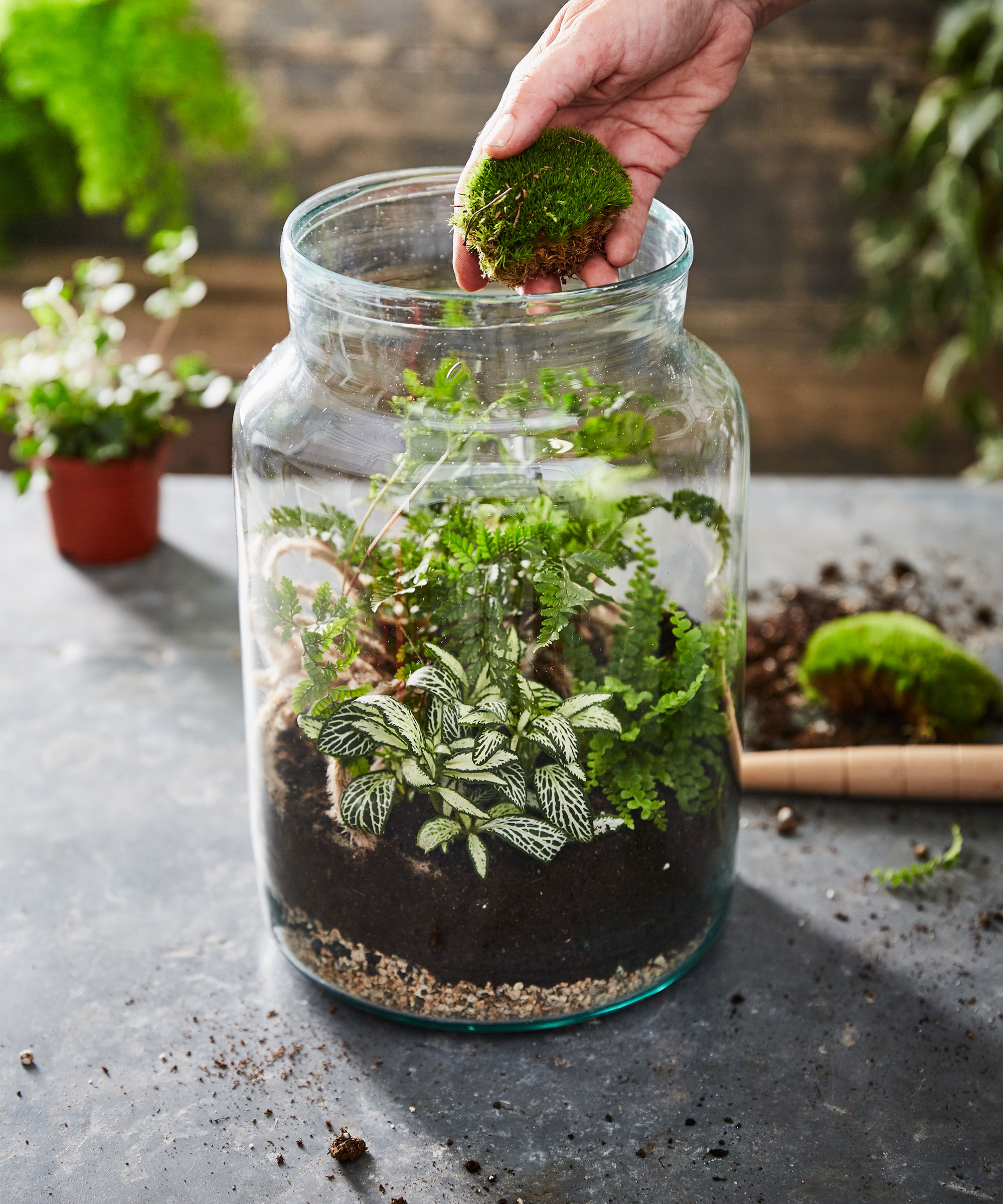
A layer of fresh moss adds a lush visual element to your terrarium design
Once your plants are in place, it's time to add decorations to your terrarium, such as rocks, shells, and other mini figurines of your choice. You can even turn it into a Christmas terrarium by adding a few festive ornaments to the mix. Just make sure not to overcrowd it, and leave enough space for your plants to grow.
You can also add a layer of live moss, which will look great especially when paired with sand and rocks. It's easy to maintain and lasts for quite a while without needing to be replaced. Or try decorative preserved moss, like this ProFlora Spanish Moss True Green at Walmart.
Use a mister or small watering can with a rose attachment to water the plants so they are just damp. Finally, close the terrarium with a lid (if you've chosen a closed one) and your mini plant ecosystem is complete.
FAQs
How can I make a mason jar terrarium?
Making a terrarium in a mason jar is super easy to do. The area for planting will be small though, so factor this in when choosing a plant and any ornaments.
The outlay for a mason jar terrarium is minimal. All you need is a jar, soil, plants and moss. Plus decorations of your choice. You can stand the mason jar upright or invert it and plant into the lid. Alternatively you can lay it on its side.
Our step by step explains how to plant a mason jar terrarium in the lid, but the method is the same whichever way you choose. Planting the lid can be an easier alternative to reaching down inside the jar for planting and aftercare.
- Make sure both the mason jar and accompanying lid are clean, rinsed properly and thoroughly dry.
- Carefully remove your chosen plant from the pot by squeezing the sides to release it.
- Position the plant in the lid of the jar. Cover the rootball with soil and pack soil around it to secure the plant.
- Add a layer of moss, pressing it into place around the base of the plant.
- Decorate with stones, shells, mini figurines and other small garden decor ornaments of your choice.
- Invert the jar over the plant, being careful not to damage any leaves by using your fingers to coerce any stray greenery into line. Then carefully twist the lid shut.
- Position your terrarium in bright indirect light. Check every few weeks to make sure the soil is moist. If you see lots of condensation in the jar, leave it open for a few hours to let some air circulate and clear the mist.
If you like giving your indoor garden displays a bit of a unique twist then why not learn how to care for air plants.

Lifestyle journalist Sarah Wilson writes about garden design and landscaping trends for Homes & Gardens. She has studied introductory garden and landscape design, and also has an RHS Level 2 qualification in the Principles of Plant Growth and Development. She is a regular contributor to Homes & Gardens and Livingetc. She has also written for Country Living, Country Homes & Interiors, and Modern Gardens magazines
